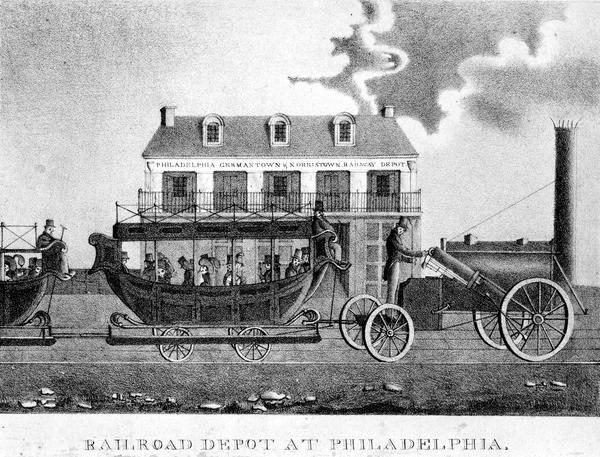Presented by John Ingram PhD
On June 6, 1832, the Philadelphia, Germantown, and Norristown Railroad began operating a 6-mile railway line between Germantown and the city below. Now part of SEPTA’s Chestnut Hill East line, it was the first railroad to operate within Philadelphia and established Germantown as America’s first railroad suburb. Germantown became a popular commuter suburb for wealthy Philadelphians, especially after the Pennsylvania Railroad opened the Chestnut Hill West line in 1884. However, Victorian Germantown and its twin railroads are the center of a larger story. The locomotives that traveled the East and West lines did not merely enable elite suburban living, they were also the engines that drove Germantown’s manufacturing boom. This presentation will outline the history of railroading in Germantown, describe the changes that it wrought in the late nineteenth century, and contextualize these changes within the wider history of the Philadelphia region and – more broadly- the United States.
This talk will be followed by a tour of the Tulpehocken Station Historical District, paying special attention to the station itself and the ways in which the railways shaped the surrounding neighborhood.
John Ingram grew up in Northwest Philadelphia. He holds a bachlor’s degree in urban history from University of Pennsylvania and a PhD in modern history from King’s College London. His dissertation concerned the intersection of urban politics, patriotism, and civic building projects in Philadelphia and London.
Meet at Ebenezer Maxwell Mansion, 200 W Tulpehocken St, Philadelphia, PA 19144.
This series is presented in partnership with Ebenezer Maxwell Mansion.

